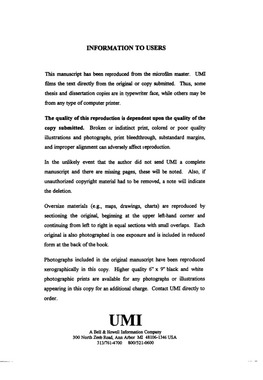| dc.contributor.author | Lewelling, Kevin Ray. | en_US |
| dc.date.accessioned | 2013-08-16T12:29:30Z | |
| dc.date.available | 2013-08-16T12:29:30Z | |
| dc.date.issued | 1997 | en_US |
| dc.identifier.uri | https://hdl.handle.net/11244/5420 | |
| dc.description.abstract | A potential solution to the operating temperature problem is to employ epitaxial lift-off techniques in order to transfer the semiconductor device from its thermally resistive substrate to copper, a superior thermal conductor. Finite element thermal models predict this transfer will increase the operating temperature by 63$\sp\circ.$ The 63$\sp\circ$ increase will allow a 40$\sp\circ$ tuning range for high resolution infrared spectroscopy without the need for cryogenic cooling. | en_US |
| dc.description.abstract | Thermoelectric cooling (TEC) modules can provide a heat sink temperature of 220 K. If a IV-VI semiconductor laser could operate in continuous wave mode while mounted on a TEC module, an electrically cooled spectrometer could be developed. Using molecular beam epitaxy and modern photolithography techniques, a 1995 PbEuSeTe/PbTe separate confinement buried heterostructure laser operated in continuous wave mode at a heat sink temperature of 223 K. This does not leave a sufficient temperature tuning range for spectroscopic applications, suggesting new approaches to the problem should be investigated. | en_US |
| dc.description.abstract | This dissertation presents thermal models showing the dramatic increase in operating temperature gained by transferring the laser structure. Also, significant progress towards constructing a copper mounted IV-VI semiconductor laser by means of a new patented fabrication procedure is documented. This dissertation contains scanning electron microscopy micrographs showing cleaved epilayer structures mounted on copper. Supporting data of non-linear current versus voltage scans and x-ray diffraction peaks of lifted-off epilayers without degradation of crystal quality are included. | en_US |
| dc.description.abstract | IV-VI semiconductor (lead-salt) lasers are well suited for infrared spectroscopy as the light emission covers the 3 $\mu$m to 30 $\mu$m spectral range; several molecules have strong absorption bands in this range. The problem hindering widespread use of these lasers is the need for cooling with liquid nitrogen or helium during use. By removing the need for cryogenic cooling, remote sensing applications such as atmospheric spectroscopy and smoke stack pollution monitoring could be further developed. Another application that has received much attention is use in medical testing through non-invasive breath analysis. One test design allows analysis of human breath for the Helicobacter pylori bacterium, which has been linked with stomach ulcers. | en_US |
| dc.format.extent | xi, 135 leaves : | en_US |
| dc.subject | Thermoelectric cooling. | en_US |
| dc.subject | Engineering, Electronics and Electrical. | en_US |
| dc.subject | Epitaxy. | en_US |
| dc.subject | Semiconductor lasers. | en_US |
| dc.title | Development of a thermoelectrically cooled IV-VI semiconductor diode laser using epitaxial lift-off techniques. | en_US |
| dc.type | Thesis | en_US |
| dc.thesis.degree | Ph.D. | en_US |
| dc.thesis.degreeDiscipline | School of Electrical and Computer Engineering | en_US |
| dc.note | Source: Dissertation Abstracts International, Volume: 58-01, Section: B, page: 0339. | en_US |
| ou.identifier | (UMI)AAI9719647 | en_US |
| ou.group | College of Engineering::School of Electrical and Computer Engineering | |
